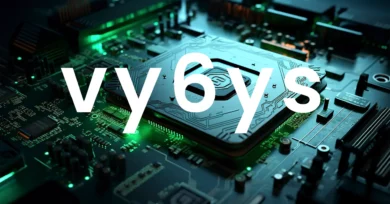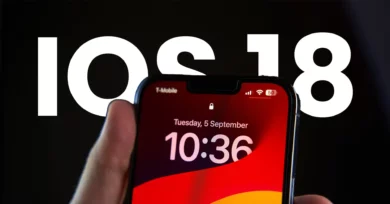In the ever-evolving landscape of online content creation, monetization is a pivotal consideration for creators looking to turn their passion into profit. While YouTube has long reigned supreme in online video, alternative platforms like Rumble have emerged, offering creators new avenues to earn. In this comprehensive exploration, we will explore Rumble vs. YouTube content creators compared to the industry giant YouTube.
Diversity in Monetization Models | Rumble vs YouTube
To begin, Rumble and YouTube boast distinct monetization models. YouTube predominantly relies on advertising revenue generated by videos. Creators are eligible to join the YouTube Partner Program, where they can monetize their content through ads placed before, during, or after their videos. In this model, creators earn a percentage of the ad revenue generated by their videos.
On the other hand, Rumble takes a different approach. Rumble vs YouTube operates on a licensing model, licensing videos to media outlets and publishers worldwide. When a video is licensed, Rumble splits the revenue earned from the sale with the creator, typically following a 60/40 split in favor of the creator. This unique model allows creators to earn directly from licensing their content.
Rumble’s Licensing Advantage
One key differentiator in the Rumble vs YouTube comparison is Rumble’s licensing strategy. Unlike YouTube, where content is primarily hosted for free and monetized through ads, Rumble actively seeks buyers for video content. This means that Rumble creators have the potential to earn from their videos even when they aren’t actively promoting them.
Rumble’s licensing approach can be particularly beneficial for creators who produce evergreen content or videos with broad appeal. Regarding the Rumble vs YouTube debate, this licensing model can provide creators with a more predictable income stream than the fluctuating ad-based model of YouTube.
Revenue Share: Rumble vs YouTube
One key differentiator in the Rumble vs YouTube comparison is Rumble’s licensing strategy. Unlike YouTube, where content is primarily hosted for free and monetized through ads, Rumble actively seeks buyers for video content. This means that Rumble creators have the potential to earn from their videos even when they aren’t actively promoting them.
Rumble’s licensing approach can be particularly beneficial for creators who produce evergreen content or videos with broad appeal. Regarding the Rumble vs YouTube debate, this licensing model can provide creators with a more predictable income stream than the fluctuating ad-based model of YouTube.
The Role of Partner Programs
Both YouTube and Rumble offer partner programs that enable creators to monetize their content beyond ad revenue further.
-
YouTube’s Partner Program
It allows creators to monetize their videos through various means, including:
- Ad revenue from ads displayed on their videos.
- Sponsorships and collaborations with brands.
- Merchandise sales through YouTube’s merchandise shelf.
- Channel memberships, where subscribers can pay a monthly fee for exclusive perks.
Rumble’s Partner Program
It offers similar opportunities, including:
- Branded content deals, allowing creators to partner with brands for sponsored content.
- Advertising revenue generated from videos.
- Revenue from the licensing of videos.
While the options appear comparable, it’s worth noting that Rumble’s partner program has specific eligibility criteria. Creators must have at least one video licensed by Rumble to qualify, adding an extra layer of engagement to the platform.
Minimum Payment Threshold: YouTube vs Rumble
Another aspect to consider when comparing rumble vs youtube is the minimum payment threshold set by both platforms.
YouTube, in the rumble vs youtube debate, allows creators to receive payouts once they’ve accrued a minimum balance of $100. This means that creators must accumulate $100 in ad revenue before they can withdraw their earnings.
On the other hand, rumble vs youtube, Rumble has a slightly lower threshold, requiring creators to reach $50 before they can withdraw their earnings. This lower threshold can be advantageous, especially for creators who are just starting and may not have the same level of viewership as established creators.
Bonus Incentives on Rumble
Rumble’s innovative approach encourages creators to strive for excellence and rewards them generously for their content’s performance, setting it apart in the world of youtube vs rumble comparisons.
No Follower Requirement on Rumble
One notable advantage of Rumble is that it doesn’t impose a specific follower count requirement on creators to monetize their content, unlike the criteria set by YouTube’s Partner Program. In the realm of youtube vs. Rumble, this makes Rumble’s monetization model more accessible to creators, regardless of their follower count.
Through Rumble’s creator program, creators can earn additional revenue if their videos achieve a specific number of views within a predefined timeframe in the context of youtube vs. rumble comparisons.
Conclusion: A World of Opportunities for Content Creators
In conclusion, both Rumble vs. YouTube offer enticing opportunities for content creators to monetize their work. While YouTube remains the industry giant with its ad-driven revenue model and a vast audience, Rumble introduces a unique licensing model that can provide creators with consistent income potential, particularly for evergreen content.
The revenue share, minimum payment thresholds, and bonus incentives on Rumble vs. YouTube make it an attractive option for creators seeking diverse revenue streams and a platform that values content quality. The absence of strict follower requirements further broadens Rumble’s appeal, making it accessible to creators at various stages of their journey.
Also Read:
YouTube and the Metrics of Significance: Views & Engagement






